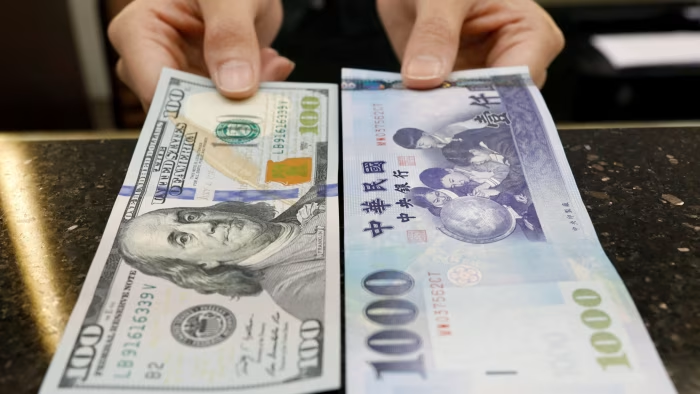TAIPEI — The sharp rise of the New Taiwan Dollar (NTD) has sent shockwaves through Taiwan’s life insurance sector, triggering unprecedented financial losses and what insiders are calling the worst exchange rate crisis the industry has ever seen.
On July 3, the NTD closed at 28.828 against the U.S. dollar — its strongest position in over three years, gaining 1.91 cents in a single day. This rapid appreciation has devastated insurers, whose overseas investments are predominantly denominated in U.S. dollars.
According to the Financial Supervisory Commission (FSC), the life insurance industry recorded a staggering NT$1.2548 trillion in foreign exchange losses during the first five months of 2025. After accounting for hedging tools, exchange costs, and reserves, the net loss still stood at a crushing NT$263.8 billion. May alone saw a record-breaking loss of NT$106.6 billion, wiping out 8.26% of the industry’s net asset value in just one month.
Exchange Rate Hits Both Local and Foreign Policies
Industry executives say the effects are twofold: NTD-denominated policies invested in foreign currency assets now face high hedging costs that insurers can barely afford. Meanwhile, even foreign currency policies — though not hedged — must be converted back into NTD for reporting purposes, shrinking their value in financial statements.
For instance, US$10 billion in assets was worth NT$330 billion when the exchange rate was 33. Now, with the rate at 29, that same amount is valued at only NT$290 billion — a NT$40 billion hit to the books.
“This is the biggest exchange rate storm the life insurance industry has ever encountered,” said one senior executive. “The financial impact is already evident, and the repercussions may continue to deepen.”
Small and Mid-Sized Insurers at Risk
While major insurance firms backed by strong financial groups may endure the crisis, smaller players are on shaky ground. Common hedging tools like non-deliverable forwards (NDFs) and FX swaps have become too costly, with current NDF rates reaching 7–8%, even higher than typical investment returns.
“These losses aren’t just accounting issues — they could threaten the solvency of weaker insurers,” another executive warned. “The higher costs are eating into profits and potentially affecting capital adequacy and net worth ratios.”
FSC Offers Temporary Lifeline
In a bid to soften the blow, the FSC recently allowed insurers to tap into up to 40% of their excess policy reserves and allocate them toward foreign exchange reserves or pre-tax profits. Industry leaders acknowledge this may help insurers avoid reporting disastrous half-year results, but caution that it’s merely a temporary fix.
“Delaying the inevitable doesn’t solve the problem,” an executive added. “If global markets fluctuate again or other financial pressures arise, we may face an even bigger crisis.”
As the New Taiwan Dollar continues to strengthen, Taiwan’s life insurance sector faces increasing uncertainty — and the need for urgent strategic adjustments.



